How To Sepia Tone In Photoshop
In the historic period of filters, at that place are more colour tints than you can count. Notwithstanding, not one holds a candle to the time-tested sepia tone.
Sepia is a soft brown tint that adds warmth to monochrome photos. It's oft added for a nostalgic or vintage look.
The sepia tone has its roots in film processing of the mid-18th century. It added a softness to monochromatic images. Three centuries afterwards, how do we reach a sepia tone?
At that place is no 1 "correct" manner to post-procedure a sepia-toned epitome. Photoshop has various tools that get the task done according to the look yous want. There are two main steps:
- Convert photo to monochrome
- Add a sepia tone
At that place are a couple of ways to get about this on Photoshop. They'll all give you a sepia photograph result, and most give you a lot of flexibility in how your photograph looks.
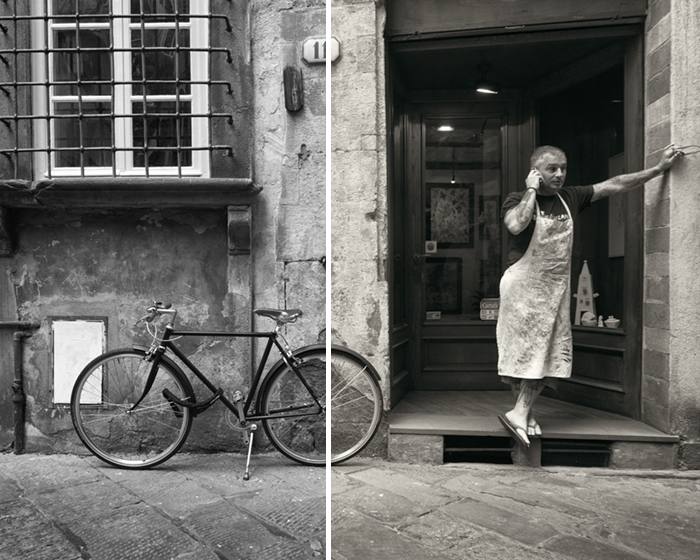

Converting to Monochrome
The sepia tone is an offshoot of the monochrome. By that logic, the first footstep is to convert your image to black and white. Here are 2 means of doing this in Photoshop.
Desaturate Paradigm
To quickly catechumen a photograph to monochrome, Photoshop has a desaturate command.
Go to the Image drop-downward card and select Paradigm > Adjustments > Desaturate (Shift-Ctrl or ⌘U). This method is quick, but it is subversive. Also, it doesn't allow you lot to control the monochrome conversion. You can add richness to your image using a black and white adjustment layer.
Black and White Aligning Layer
A non-destructive mode to make your photo monochrome is to add an adjustment layer. Become to the Layer driblet-down bill of fare and selectLayer > New Aligning Layer > Black and White. Photoshop will do a basic monochromatic conversion. But you can too adjust each color channel. For instance, you can burnish or darken the reds or dejection in your image.
You may non encounter a divergence between these 2 methods of desaturating your paradigm. The results depend on the colours in your image and how much y'all adjust them. For this comparing, I darkened the reds of the covered bridge and lightened the yellows of the trees. The method you lot employ depends on how much control y'all want over the tones in your paradigm.
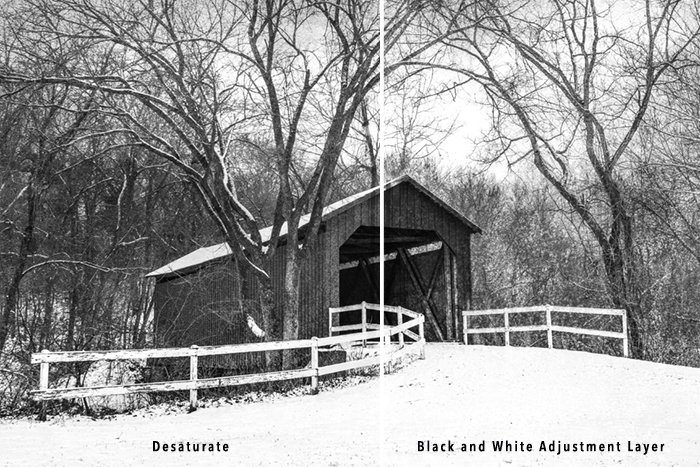
Adding the Sepia Tone
Once your image is monochromatic, yous tin can add a sepia tone. Hither are 4 ways to do this in Photoshop. Each method gives you slightly different options for adjusting the sepia tone.
Using the Photo Filter Adjustment Layer
Using the Photo Filter Adjustment Layer is a pop method of adding a sepia tone.
Go to the Layer drop-down menu and selectLayer > New Aligning Layer > Photograph Filter. Select the Sepia setting in the filter settings. Employ the Density slider to arrange the forcefulness of tint from 0 to 100%. I used a Density of xl%. If you lot don't like the colour of the sepia tone, click the "Color" button then select the coloured square. You can select a different tint.
Checking the Preserve Luminosity box brightens the whites.
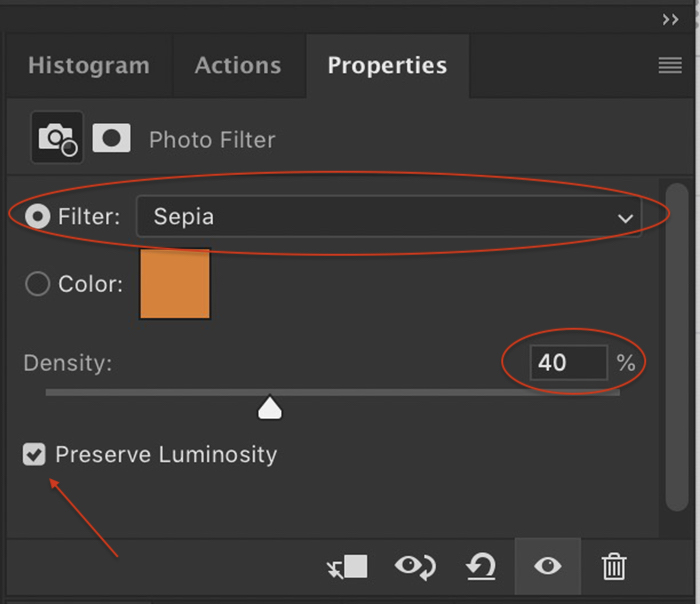
Altering Hue & Saturation
Photoshop too includes a sepia filter in the Hue/Saturation aligning layer.
Become to the Layer driblet-down bill of fare and selectLayer > New Adjustment Layer > Hue/Saturation. From the presets, choose Sepia. You have the option to adjust the color of the sepia tint, the saturation, and the exposure.
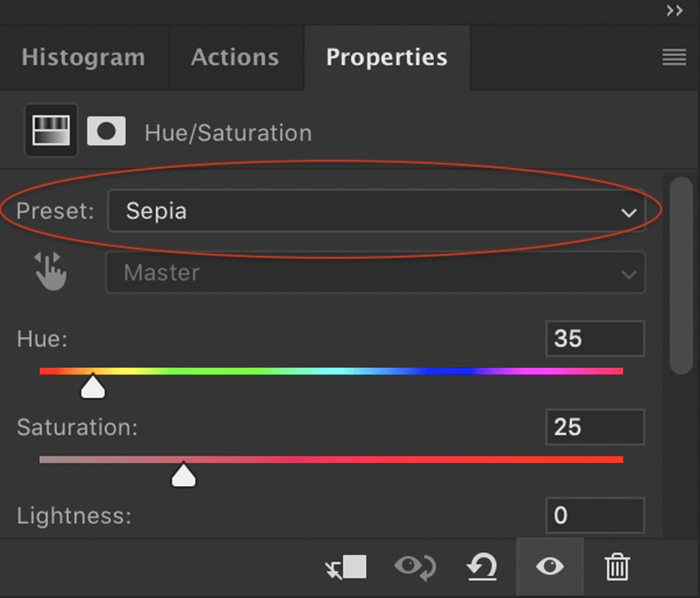
Color Fill Layer
Another way to achieve a sepia tone in Photoshop is to use a Color Make full layer to your image.
Go to the Layer drop-down carte and selectLayer > New Fill Layer > Solid Color. Click OK and choose a brown color. I use #604b1a colour hex. But I recommend that y'all experiment with unlike shades of brown until you discover one you similar. Then select a blend mode. I utilize Soft Light, but each blend mode will give you a unlike wait. If the effect is as well strong, lower the opacity of the layer.
Color Balance
Finally, you can create a sepia tint in Photoshop using Color Balance.
Become to the Layer drop-down carte and selectLayer > New Adjustment Layer > Color Residuum. Select the Midtones. Lower the yellow slider and raise the cerise slider. For the image in this article, I chose -forty for yellow and +xx for reds, merely every photo is dissimilar. Using this method, you can fine-tune the colour of your sepia tint. You tin besides cull to tint highlights, mid-tones, and shadows differently.
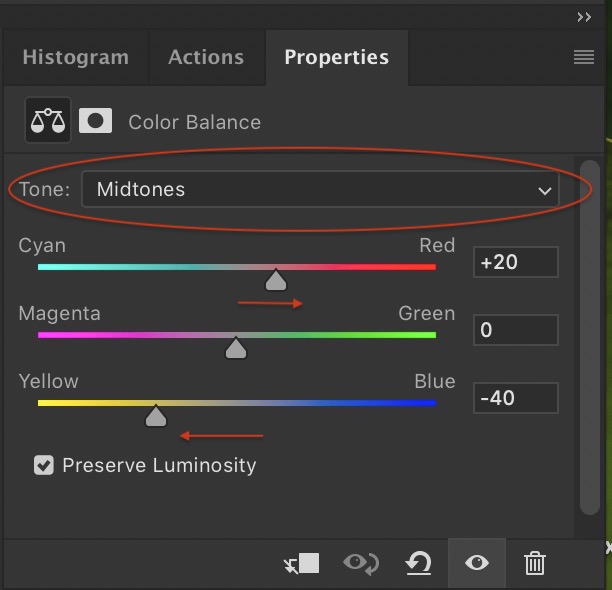
I created images using the four methods of applying a sepia tone.
The images look similar, but on closer look, there are some differences. Both the Photograph Filter and Color Make full methods tint the whites to a greater extent than the other methods. For this comparing, I've adjusted the browns to announced somewhat similar. In each of the methods, you tin can select a mix of yellows and reds to create the brown tint that y'all want.
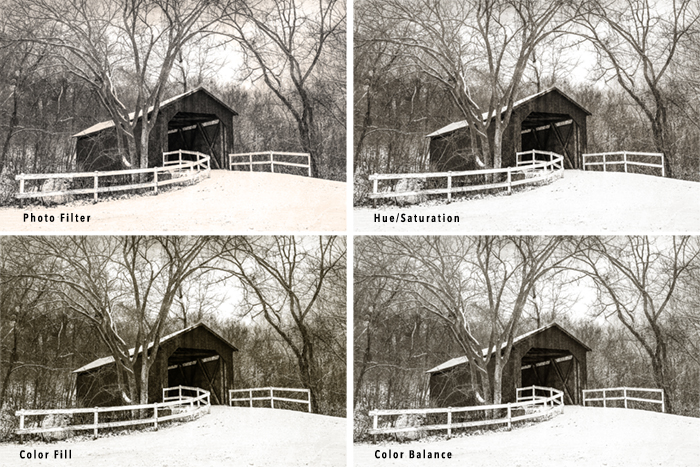
Conclusion
It's easy to create a sepia effect on Photoshop.
By adjusting a few sliders, yous can control the temperature and opacity that best conform your paradigm. We take explored four tested methods to achieve the sepia glow. Over time, you may find other Photoshop commands that further enhance this effect.
In fact, consider adding a Gaussian blur or a light vignette and see where that takes you!
Via expertphotography.com
Source: https://mieungu.art/en/how-to-add-a-sepia-tone-in-photoshop/
Posted by: moospanduch.blogspot.com

0 Response to "How To Sepia Tone In Photoshop"
Post a Comment